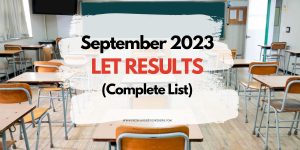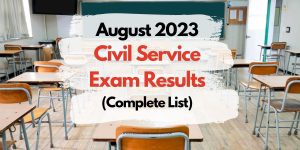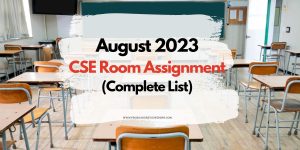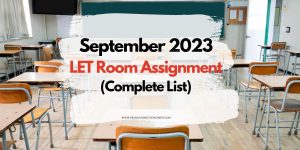This is the Multiples Choice Questions Part 3 of Science. In preparation for the LET Exam, practice, and familiarize every question we have, it might be included in the actual examination. Good luck.
Be fully prepared for your exam, follow our tips on effective studying and test-taking strategies. Click here to read the tips:
| Not passing the board exam does not mean you are not smart. |
| There are two sides of the coin, to pass the board exam or to fail it |
| Top 10 things to do in case you will not pass the board exam |
| More… |
SCIENCE Part 3
1. Who developed the heliocentric model of the Universe with the Sun as the center of the Solar System?
a. Sir Isaac Newton
b. Johannes Kepler
c. Tycho Brahe
d. Nicolaus Copernicus
answer: d
2. A volcanic mudflow of debris flow composed of a slurry of pyroclastic material, rocky debris and water.
a. Lava
b. Lahar
c. Mud
d. Sand
answer: b
3. A phosphorous self-ignites at room temperature with the application of heat is a extra example of what combustion?
a. Rapid combustion
b. Smouldering
c. Spontaneous combustion
d. Turbulent combustion
answer: c
4. ____________ give birth to live babies, are warm-blooded and have fur and hair.
a. Mammals
b. Crustaceans
c. Reptiles
d. Amphibians
answer: a
5. A _____________ is an animal with a backbone surrounded by cartilage or bone.
a. invertebrate
b. vertebrate
c. mollusk
d. reptile
answer: b
6. Any of a large group of one-celled organisms that live in water or as parasites.
a. Algae
b. Bacteria
c. Protozoa
d. Flagella
answer: c
7. It is an organism that lives in or on another organism and benefits by deriving nutrients at the host’s expense.
a. Prey
b. Predator
c. Species
d. Parasites
answer: d
8. In ecology, these are animals that live by preying on other organisms for food. They hunt and eventually kill their prey.
a. parasites
b. predators
c. hunters
d. wild animals
answer: b
9. Fleas harm their hosts, such as dogs, by biting their skin, sucking their blood, and causing them to itch. This is an example of what?
a. Mutualistic relationship
b. Predatoristic relationship
c. Parasitic relationship
d. Symbiotic relationship
answer: c
10. When two organism of different species “work together,” each benefitting from the relationship, this is called ______________.
a. Parasitic
b. Commensalistic
c. Mutualistic
d. Predatoristic
answer: c
11. This is a change in the heritable characteristic of biological populations over successive generations which give rise to biodiversity.
a. Evolution
b. Dispersion
c. Reproduction
d. Expansion
answer: a
12. A slowly moving mass or river of ice formed by the accumulation of snow on mountains or near the poles.
a. snowflake
b. snow storm
c. ice mass
d. glacier
answer: d
13. What causes glaciers to move?
a. the friction created as they slide along the ground’s surface
b. the force of gravity on the ice mass
c. the base of the glacier is very cold
d. the amount of snow accumulation
answer: b
14. The Earth’s crust is made up of 6 huge slabs called plates. What are formed as a result of two slabs of the Earth’s crust smashing into each other pushing the land upward?
a. volcanoes
b. mountains
c. valleys
d. gorges
answer: b
15. What occurs when two plates pushing past each other caused a fracture in the Earth’s crust?
a. volcanic eruption
b. earthquake
c. mountain formation
d. melting of mountains of snow
answer: b
16. This is a series of organs responsible for taking in oxygen and expelling carbon dioxide in humans.
a. bronchial tube
b. respiratory system
c. digestive system
d. lungs
answer: b
17. These are metals combined with other substances to make them stronger, harder, lighter, or better in some other way. Examples are filling in our teeth and magnets in loud speakers.
a. colloids
b. aluminum
c. copper
d. alloys
answer: d
18. The following are the ways of making alloys except:
a. Heat and melt the components to make liquids, mix them together, and then allow them to cool into what is called a solid solution.
b. Turn the components into powders, mix them together, and then fuse them with a combination of high pressure and high temperature.
c. Fire beams of ions into the surface layer of a piece of metal.
d. Heat the metal and flatten with a mallet.
answer: d
19. The primary organs of the respiratory system which carry out the talking in oxygen and expelling carbon dioxide as we breathe.
a. liver
b. lungs
c. heart
d. pancreas
answer: b
20. ____________ is a technique that vegetatively joins two plants into one, using the roots and bottom portion of one plant and attach to a tender shoot from the top portion of another plant.
a. Marcotting
b. Plant Propagation
c. Grafting
d. Plant Cutting
answer: c






